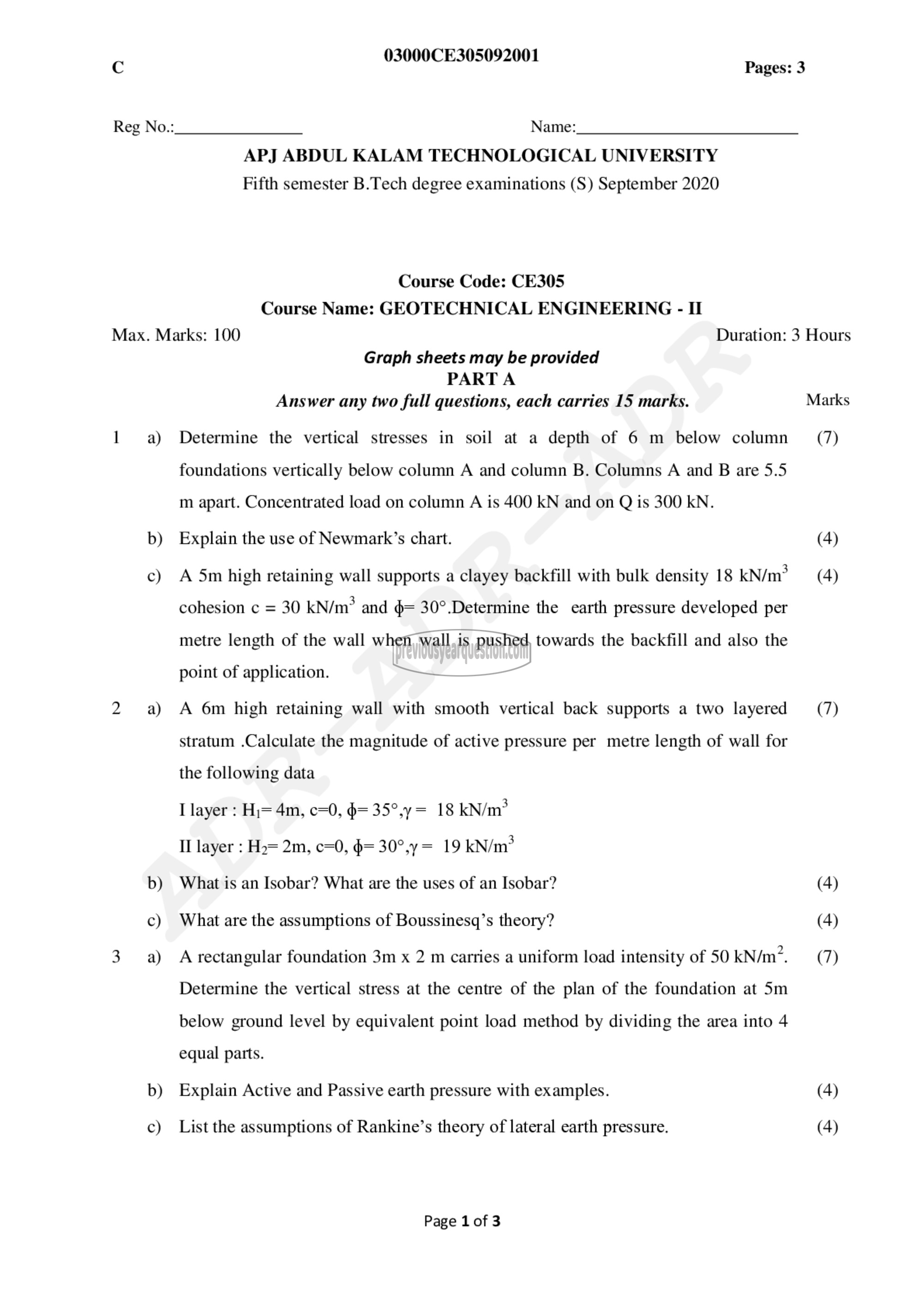APJ ABDUL KALAM TECHNOLOGICAL UNIVERSITY Previous Years Question Paper & Answer
Semester : SEMESTER 5
Subject : Geotechnical Engineering- II
Year : 2020
Term : SEPTEMBER
Branch : CIVIL ENGINEERING
Scheme : 2015 Full Time
Course Code : CE 305
Page:1
( 03000CE305092001 Pages: 3
Reg No.: Name:
APJ ABDUL KALAM TECHNOLOGICAL UNIVERSITY
Fifth semester B.Tech degree examinations (S) September 2020
Course Code: CE305
Course Name: GEOTECHNICAL ENGINEERING - 11
Max. Marks: 100 Duration: 3 Hours
Graph sheets may be provided
PARTA
Answer any two full questions, each carries 15 marks. Marks
1 a) Determine the vertical stresses in soil at a depth of 6 m below column (7)
foundations vertically below column A and column B. Columns A and B are 5.5
m apart. Concentrated load on column A is 400 KN and on Q is 300 KN.
b) Explain the use of Newmark’s chart. (4)
c) A 5m high retaining wall supports a clayey backfill with bulk density 18 kN/m* (4)
cohesion ௦ = 30 kN/m® and = 30°.Determine the earth pressure developed per
metre length of the wall when wall is pushed towards the backfill and also the
point of application.
2 9) A 6m high retaining wall with smooth vertical back supports a two layered (7)
stratum .Calculate the magnitude of active pressure per metre length of wall for
the following data
I layer : पा 4m, c=0, १5 35°,y= 18 kN/m*
11 layer : 125 2m, c=0, > 30°,y= 19 kN/m?
b) What is an Isobar? What are the uses of an Isobar? (4)
c) What are the assumptions of Boussinesq’s theory? (4)
3 a) A rectangular foundation 3m x 2 m carries a uniform load intensity of 50 kN/m?. (7)
Determine the vertical stress at the centre of the plan of the foundation at 5m
below ground level by equivalent point load method by dividing the area into 4
equal parts.
b) Explain Active and Passive earth pressure with examples. (4)
c) List the assumptions of Rankine’s theory of lateral earth pressure. (4)
Page 1 of 3
